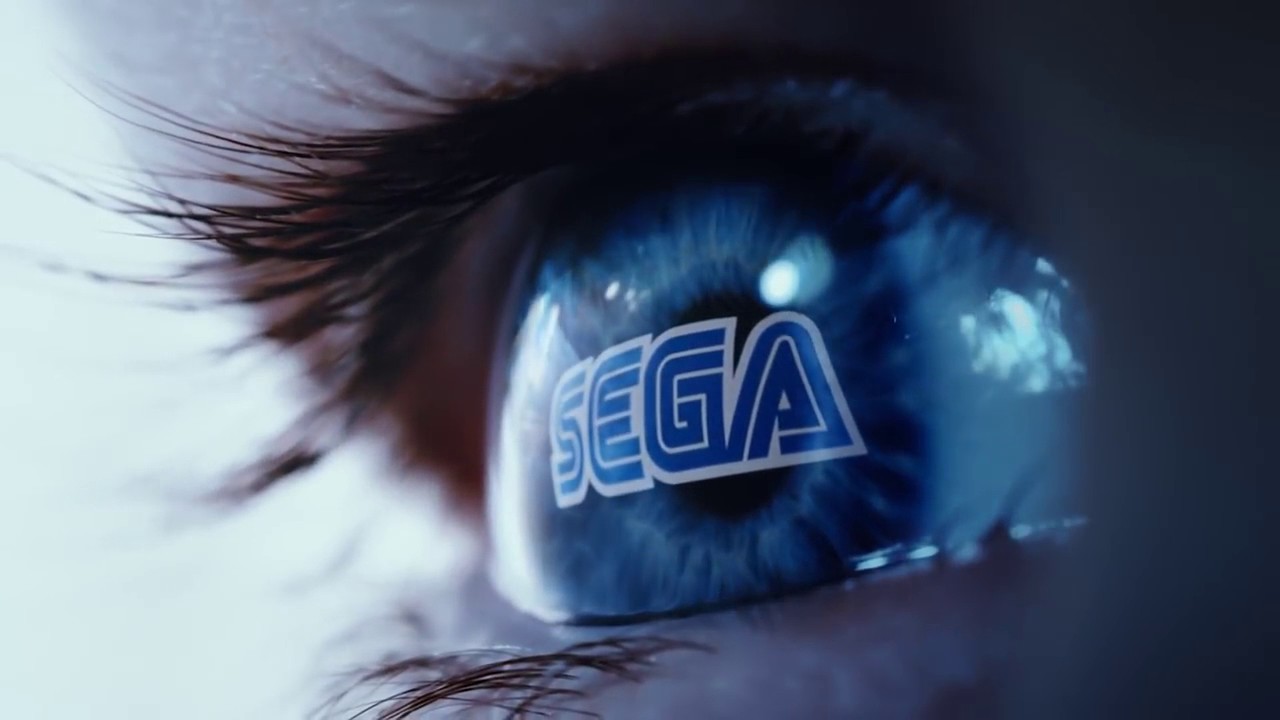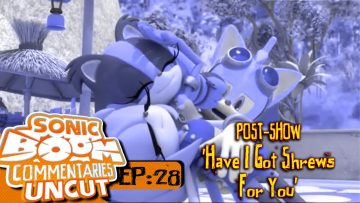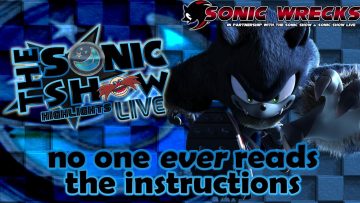
Digital Re-Releasing: A Last Chance Saloon
In a world where a never ending supply of yearly sequels for a handful of AAA franchises dominates the chart and even series that end never actually do whilst for most of the year dominates the chart.
Truly creative gems often sink without a trace. Gamers are often left bemoaning (when they aren’t playing these games of course) why there aren’t any truly creative games like [insert example here]! Or wonderfully imaginative titles such as [lovable retro classic] or just plain old “Why don’t they bring back [past-generation franchise]? I loved that!”
Why not, indeed.
October brings the second and third instalments of SEGA’s new SEGA Heritage line. A line that personifies their pro-Digital push and a line that is extremely important as to how the company, shrunk to near extinction in Europe with recent cutbacks even proceeds from now on. Should you get them? Well yes, for a couple of reasons.
For a start until very recently indeed Sonic Adventure 2 was the best modern-era – if you can even call it that anymore – Sonic title. Whilst NiGHTS into Dreams…, the flagship title for SEGA’s ill-fated Saturn console has the sort of gaming and creative pedigree that retro games journalist get a funny look over, before crossing their legs and looking about surreptitiously for a cushion to cover things.
Quite a reaction to be sure, but if they’re are so wonderful then why the concern? Well simply put, creativity doesn’t necessarily equal cash and if you don’t get them now you’ll like as not ever see the characters on their own again.
SEGA’s road has seemingly never been smooth; a roller-coaster of dizzying highs and spectacular lows that have left the company a shade of its heyday. Despite this fans have stuck rigidly by them, waving the blue flag throughout. Though they themselves will admit its never been the easiest of decisions to do so. Yet in the last couple of years, something seems to have happened; a new fondness has been kindled in the general gaming fanbase for SEGA. Perhaps a case of time healing all wounds? For instance every year that passes the Dreamcast seems to grow to ever more in legendary status as THE console of the past. When Insert Coin announced their awesome new Dreamcast themed messenger bag my Twitter feed pretty much exploded in guttural spasms of joy.
Had I been in the same room as half these people I may have required some form of umbrella.
 The Big Blue has over its lifetime had many strings to its bow but the one thing SEGA have always had as opposed to a lot of other publishers is a rich assortment of characters at their disposal. A diverse assortment of strong male and female, human and anthropomorphic characters (fuzzy animal creatures with human-like traits if you don’t know what that means) all with very different motivations and qualities. The majority of these titles are widely regarded as classics in their own way and many started trends or styles that are now common place in games.
The Big Blue has over its lifetime had many strings to its bow but the one thing SEGA have always had as opposed to a lot of other publishers is a rich assortment of characters at their disposal. A diverse assortment of strong male and female, human and anthropomorphic characters (fuzzy animal creatures with human-like traits if you don’t know what that means) all with very different motivations and qualities. The majority of these titles are widely regarded as classics in their own way and many started trends or styles that are now common place in games.
It’s arguable for instance that SEGA are one of the pioneers of musical rhythm-action games with titles like Space Channel 5 and Samba De Amigo. Jet Set Radio, the first of these “heritage” titles is credited as being one of, if not the first cel-shaded video games. Whilst Yu Suzuki’s open-world magnum opus Shenmue created quick time events and developed the idea of real-life rules and chores being imposed on gamers.
It also made gamers develop somewhat unhealthy obsessions with capsule toys, sailors and the mechanics of the forklift truck.
Unfortunately despite being recognised as classics, SEGA’s enviable back catalogue of lovable characters have one specific thing in common – they’ve never exactly been good at making… you know… money. Except for Sonic of course, Sonic is the gift that keeps on giving. If he was designed again now he’d probably be given a slot in his head and a rubber stopper in his backside.
Its a bitter pill to swallow to be sure, but in nearly all cases the most successful game these beloved characters have been in was in actually SEGA Superstars Tennis (5.32m sales combined globally) SUMO Digital’s SEGA party-mashup using the Virtua Tennis engine. SEGA have tried desperately to reinvent these core franchises over time for a new audience, but ultimately its never truly gelled. NiGHTS Journey Of Dreams badly under-performed, especially in Europe. Golden Axe: Beast Rider, part of SEGA’s annus horribilis in 2006 was considered a disaster. In fact the only reworking that could be considered a success was its grindhouse, tongue-in-cheek Wii-magining of its classic HOUSE OF THE DEAD franchise, HOTD: OVERKILL. Otherwise for its character-driven franchises SEGA stacks up pretty poorly.
Don’t believe me? Here’s the worldwide sales figures for the last boxed product released from each of SEGA’s “All-Star” franchises. These figures are those listed according to VGCharts with the last three Sonic related games included for comparison.
Mario & Sonic London 2012 – 3,820,000
Sonic Colours – 2,400,000
Sonic Generations – 2,210,000
_____________________________________
HOUSE OF THE DEAD: OVERKILL* – 1,060,000
Golden Axe: Beast Rider – 600,000
Shenmue II** – 470,000
Crazy Taxi: Fare Wars – 450,000
Super Monkey Ball 3D*** – 390,000
NiGHTS: Journey Of Dreams – 370,000
Panzer Dragoon Orta – 260,000
Billy Hatcher & The Giant Egg -250,000
Skies of Arcadia Legends – 220,000
JSRF: Jet Set Radio Future – 210,000
Shinobi 3DS: 90,000
OutRun 2006: Coast 2 Coast – 80,000
Space Channel 5 Special Edition – 80,000
* Combining the PS3 Extended cut sales
**The XBox port did the big business here, selling twice the volume of the Dreamcast original.
*** Aided by bundle sales for the 3DS
Wow, mediocre reading huh. I bet you didn’t expect to see Beast Rider so high did you? But this is the point, these wonderful franchises simply don’t work in boxed product format in the current market.
Heck, it turns out they didn’t even work in the old one.
As a result if you want to see both the old classics come back out and potentially new adventures for these characters support the digital re-releases now. Why would SEGA or any publisher put investment in these characters otherwise? You can have the most original game in the world, with a fanbase and critical acclaim but if it doesn’t sell or is unprofitable?
Digital is either a new beginning or a possible total end for these franchises: It’s put up or shut up time. You want those classic franchises from the past to return, then you’d best show them some love now and prove they have a future on digital. They all live or die based on what happens in this new Heritage era and if they do fail… we’ll all be poorer gamers for it.

![[ID: eQoL1NOVeA4] Youtube Automatic](https://lastminutecontinue.com/wp-content/uploads/id-eqol1novea4-youtube-automatic-60x60.jpg)


![[ID: 7Sho0BqMpg8] Youtube Automatic](https://lastminutecontinue.com/wp-content/uploads/id-7sho0bqmpg8-youtube-automatic-360x203.jpg)
![Private: [ID: LPBYwQFbB08] Youtube Automatic](https://lastminutecontinue.com/wp-content/uploads/2022/08/private-id-lpbywqfbb08-youtube-a-360x203.jpg)
